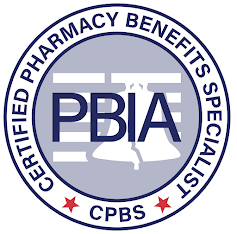2023 Trends in Specialty Drug Benefits Report Released by PSG and other notes from around the interweb:
- 2023 Trends in Specialty Drug Benefits Report. Specialty drug costs have continued to push the boundaries in terms of complexity and affordability. The complicated landscape must consider many variables, such as multiple dispensing channels, dual payment methods, and site of care. This report takes a detailed look into what plan sponsors are facing as they make decisions relative to specialty drug benefit plan design. Additional topics covered in the report include increasing usage of new-to-market formulary blocks, interest in site of care programs, prior authorization tracking and reporting, and use of strategies related to biosimilars.
- Expert: Targeted Approach of Specialty Drugs Drives Rising Prices. In an interview with Pharmacy Times at the 2023 Asembia Specialty Pharmacy Summit, Naveen Mansukhani, BPharm, director of Operations and Account Management for Retail Pharmacy Services at Cardinal Health, discussed skyrocketing prices for specialty drugs and what is driving those increases. Q: Despite being just about 2% of overall prescription volume, specialty medications are now more than half of total annual pharmacy spending. Are there specific drug classes or disease states that are driving this issue? Naveen Mansukhani, BPharm: Specialty drugs are very targeted drugs to targeted disease states. Inflammatory disorders, oncology, multiple sclerosis, those are just some of the drug classes that are currently driving the specialty spend.
- Data and Collaboration Provide a Way Forward for Value-Based Care. In the 13 years since the passage of the Affordable Care Act, healthcare organizations and other stakeholders have recognized that tracking key performance indicators such as readmission rates, average length of stay and patient satisfaction are insufficient to realize the full potential of a patient-centered care experience. As value-based care models mature, measurements have expanded to include the social determinants of health and other issues that providers and payers must consider if they are to treat patients holistically. This includes the availability of transportation, family assistive services, affordable housing and other factors that provide a foundation for population health. This progress is encouraging, but the industry still has a long way to go. Clinical and financial metrics are just one lens to assess the success in delivering value-based care, and even medical, demographic, and economic data is insufficient. More granular, incisive data on the healthcare industry itself is required to fully assess how much progress the industry is making in delivering value-based care.
- What is transparency? Six things to look for in a PBM contract. If you don’t know the answer, they’re not transparent. PBMs aren’t incentivized to be transparent because they make money on drugs in many creative ways. So long as this remains true, their interests are not aligned with those of the employer or employees, and being transparent puts their business model at risk. For example, it’s an open secret that many PBMs make huge profits by negotiating “rebates” with drug manufacturers in the name of lowering the price of drugs. The truth is that those PBMs run a pay-to-play scheme, excluding from their formularies the drug manufacturers that don’t pay the rebates. The PBMs argue they are now passing most rebates received to employers to reduce drug costs. It should be no surprise that, at the same time rebate revenue has gone down for PBMs, they experienced a commensurate or greater increase in “admin fees” received from manufacturers for “processing rebates.” Whether you call it a rebate or an admin fee, it has the same effect: driving up wholesale drug prices and lining the PBM’s pocket at employer and patient expense. Another customary practice is “spread pricing,” where a PBM adds margin to the price they pay the pharmacy versus what they charge health plans and patients. Who keeps the spread? The PBMs, of course. And pharmacy owners, health plans, and health care consumers pay the price.

